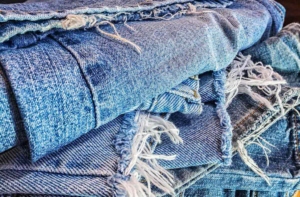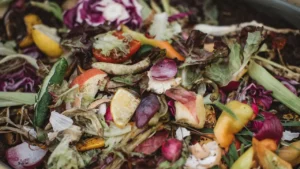How to Get Rid of Backyard Waste? Top Tips for a Clean and Green Yard
How often have you looked at your backyard and thought, “Wow, this place is a mess! I really need to dispose of yard waste.” Well, you’re not alone. Many people have trouble knowing how to get rid of backyard waste to increase curb appeal.
Garden waste can build up quickly; before you know it, you have a big problem. From leaves and twigs to grass clippings and garden debris, there’s a lot of waste to deal with.
And if you don’t deal with it properly, it can attract pests, create health hazards, and even damage your property. So what’s the best way to get rid of all that backyard waste? The answer may surprise you.
Keep reading. You’ll be glad you did!
What Is Yard Waste?
Before we divulge into how to get rid of backyard waste, let’s first define what it is. Yard waste is any organic material that comes from your yard from large trees, shrubs, and bushes. They include:
- Leaves and twigs
- Grass clippings
- Garden debris
- Hedge trimmings
- Tree limbs and branches
- Pine Needles
- Old sod
- And other yard waste
Basically, anything that grows in your yard can be considered yard waste. And while some of it, like leaves and twigs, can be composted, other items, like grass clippings, should be disposed of properly.
The Dangers of Improperly Disposing of Yard Waste
When you have a lot of yard debris, throwing it all in the trash can be tempting. But that’s not always the best solution. Here’s why:
It Can Attract Pests
If your yard is producing surplus waste, chances are you also have a lot of pests. That’s because many pests, like rats and mice, are attracted to organic material. So if you’re not cautious, you could end up with a severe pest problem.
It Can Create Health Hazards
Yard waste can also be dangerous to your health. If it’s left to decompose, it can release harmful toxins into the air. And if you have allergies, exposure to these toxins can trigger a severe reaction.
It Can Damage Your Property
Finally, yard debris can also damage your property. If it’s left to decompose, it can attract mold and mildew. And if it’s not disposed of properly, it can cause flooding.
Most importantly, some organic waste does not belong in an incinerator or landfill. Organic wastes like food scraps, for example, should be composted. Sending them to landfills may not decompose them properly.
As a result, they will release methane gas into the atmosphere, which is a greenhouse gas. This can cause climate change and other environmental problems.
In fact, the United States Environmental Protection Agency states that methane’s presence in the atmosphere influences the earth’s climate system and temperature.
This is because methane (CH4) is 25x more effective than carbon dioxide (CO2) at trapping heat in the atmosphere. Thus, it causes the temperature to rise.
Many homeowners unknowingly contribute to climate change by sending their yard waste to landfills. So what’s the solution? How to get rid of backyard waste without damaging the environment?
Is It a Good Idea to Burn Yard Waste?
You may have heard that burning yard waste is a good way to get rid of it. But is that really true?
No! Burning is not a good yard waste disposal method. While burning yard waste may seem like an easy solution, it’s actually not a good idea. Here’s why:
- It’s illegal in some states. In many states, it’s actually against the law to burn yard waste. That’s because it can release harmful toxins into the air, which can be dangerous to your health.
- It’s bad for the environment. Burning yard waste is also bad for the environment. When you burn organic material, it releases methane gas into the atmosphere.
- It’s a fire hazard. Finally, burning yard waste is also a fire hazard. If you’re not careful, you could start a wildfire that could damage your property and endanger your life.
How to Get Rid of Backyard Waste? The Best Ways to Eliminate Yard Waste
There are a plethora of ways to get rid of yard waste. But not all of them are equally effective or environmentally friendly. Here are some of the best ways to get rid of your backyard waste:
Lawn Care – Leave Grass Clippings on the Lawn
If you have a lawn, one of the best ways to get rid of grass clippings is to leave them on the property. Grass clippings add nutrients that your lawn needs, making excellent fertilizer.
Plus, they’re free! So why not put them to good use? Just be sure to cut grass regularly and evenly. This will prevent the clippings from smothering your lawn and causing problems.
On the other hand, if the green waste makes a large clump, use your mower to chop them up. This allows you to spread the clippings evenly over your lawn.
An often overlooked benefit of not throwing away grass clippings is that it reduces transportation-related emissions.
Turn Backyard Waste Into Mulch
Mulching is the process of covering the soil with a layer of organic material. This can be done for both aesthetic and practical purposes.
For example, mulch can make your garden look neater. But it can also help to prevent weeds from growing, conserve moisture, and protect your plants from extreme temperatures.
When it comes to mulch, there are two types: organic and inorganic. Inorganic ones, like rocks and gravel, don’t break down over time. So it’s not ideal for use in gardens.
On the other hand, organic mulch, like wood chips, bark, and leaves, does break down over time. As it does, the mulch releases nutrients into the soil, which is great for your plants.
Organic mulch is easy to make at home. All you need is a mulching mower or a wood chipper/shredder. With a mulching mower, you can create your own mulch. Simply mow your lawn and let the clippings fall where they may. They’ll eventually break down and turn into mulch.
If you don’t have a mulching mower, you can use a chipper/shredder to turn yard waste into mulch. This is a great way to eliminate branches, leaves, and other debris.
It can be made from leaves, twigs, grass clippings, and even tree bark. And it has a lot of benefits, including:
- suppressing weeds
- retaining moisture
- preventing erosion
- protecting plants from extreme temperatures
- adding nutrients to the soil
- keeping the soil temperature adequate
Just be sure to use a thick layer. This will prevent weeds from growing and help your plants to retain moisture.
Not only does mulch give your garden beds a neater appearance, but it also covers up bare soil. Soil that is left uncovered has little to no life and is more likely to experience erosion than covered soil.
Reuse fallen branches and brush as mulch for your open spaces. Mulching can get expensive, especially when you add delivery fees, so using yard waste is a more affordable option.
Compost Backyard Waste
Composting is an excellent way to get rid of yard waste. And it has the added benefit of creating a nutrient-rich soil amendment for your garden.
To create compost piles, you’ll need a compost bin or pile. This can be as simple as a wire cage or an old trash can with holes drilled in the bottom.
Or you can build your compost bin using pallets, recycling bins, or other materials. Once you have your bin or pile, it’s time to start adding materials.
The key to successful composting is to create the right mix of carbon- and nitrogen-rich materials. They can be easily sourced from your yard trimmings.
- Carbon-rich materials, like leaves and straw, are brown or tan.
- Nitrogen-rich materials, like kitchen scraps and green leaves, are green.
- You’ll need about three parts carbon-rich material to 1 part nitrogen-rich material.
- You should also add a layer of soil to your bin or pile. This will help to introduce beneficial microbes that will speed up the composting process.
Once you have your bin or pile assembled, it’s time to start adding materials. How often you add material will depend on the size of your bin or pile.
For example, if you have a small bin, you may need to add material every day or two. But if you have a large bin, keeping yard waste once a week or so is advised.
When adding green materials, be sure to mix them up. This will help to aerate the compost and speed up the decomposition process.
Composting can take anywhere from a few weeks to a few months. Once the material in your bin or pile has broken down, it’s ready to use.
Just add it to your garden beds or use it as a top dressing for your lawn. You can also add it to potted plants.
Not only is composting a great way to get rid of yard waste, but it’s also an excellent way to create nutrient-rich soil for your garden. And it doesn’t take much time or effort to do.
So if you’re looking for a way to reduce your environmental impact and improve your garden, composting is the way to go.
Drop Yard Waste at a Municipal Collection Site
If you don’t want to compost your yard waste or you have more than you can compost, you can take it to a municipal collection site.
Most municipalities have at least one collection site or a disposal center where residents can drop off yard waste, including hazardous materials. In some cases, they have dumping trucks that come to houses and residential societies on collection day.
This is one of the eco friendly ways to get rid of brush, leaves, plastic bags, yard waste bags, and other organic debris.
And it’s usually free or very low-cost. Check with your municipality to find out where the nearest collection site is, what types of organic waste and materials they accept, what the local laws state, and what disposal method you have to follow.
Yard waste can also be taken to a landfill. But this should be a last resort as landfills are not designed for organic materials.
Use Backyard Waste to Fill Raised Beds and Build Planting Mounds
Brush, leaves, and other organic debris can be used to fill raised beds and build planting mounds.
For gardeners who don’t have much space, raised beds are a great option. And using yard waste to fill them is a great way to reduce your environmental impact.
You can also use yard waste to build planting mounds. This is an excellent way to add height and interest to your garden. Just be sure to mix the material up, so it doesn’t compact too much.
A garden bed contains different layers of soil and organic matter. The top layer, or surface layer, is an essential layer for plant growth.
The best part is that you can use waste like cardboard and newspaper to create this layer. Just lay down a few sheets of newspaper or cardboard, wet them, and then cover them with leaves, straw, or grass clippings.
This will help to smother any weeds that may be growing in the area and also help to retain moisture.
Know Your Local Regulations for Disposing of Yard Waste
Before getting rid of any yard waste, check with your local municipality to find out what the regulations are.
Some municipalities have restrictions on what materials can be disposed of and how they can be disposed of.
For example, some municipalities require that yard waste be taken to a municipal collection site. Others may allow you to put it in your regular trash.
It’s important to know the regulations in your area so you can dispose of your waste properly. Improper disposal of yard waste can lead to fines or other penalties. And it can also harm the environment.
So do your research and ensure you’re properly disposing of your yard waste.
Subscribe to a Regular Waste Pickup Service
Enter CheckSammy!
CheckSammy is the world’s leading bulk junk and recycling company, with coast-to-coast coverage. They are your answer to the question – how to get rid of backyard waste.
Dedicated to providing sustainable solutions for businesses and homeowners, they are more than a recycling partner.
They provide comprehensive and sustainable solutions that offer detailed insights into your waste management and ESG programs.
Not only are its recycling and sustainable junk removal solutions easy to use, but they also produce rich data that can be used for reporting and making strategic decisions.
When CheckSammy is on the job, you can rest assured that your unwanted junk will be picked up, sorted, and disposed of properly. They will sweep up after themselves, so you don’t have to lift a finger.
They’ve established bonds with resale shops, recycling centers, and composting stations, so surplus waste doesn’t go to landfills.
Not to beat around the bush, but their prices are 30-40% lower than other national competitors. Furthermore, they offer what could be considered the best pricing – with no added or hidden fees of any kind.
Lastly, CheckSammy is tech-forward. With innovations like SmartBINS and SmartDASHBOARD, homeowners can book and track their waste with unparalleled ease and transparency.
You can make a difference by reducing the amount of waste you create.
Contact CheckSammy to discuss your options and learn more about the services.
See Our Services
Create a custom solution to meet your waste and sustainability goals. Contact us today!
Continue reading
Dive deeper into the CheckSammy Blog by reading one of our posts below
Feeling the Pain of Higher Resident Turnover? Apartment Junk Removal Can Help
If you’re a property manager, you’ve probably had a significant increase in tenant turnover over the last couple of years. So it’s no wonder apartment junk removal may be top of mind for you right now. There are several reasons for this shift. For one, the housing market is on fire right now. In 2020 […]
Read More About Feeling the Pain of Higher Resident Turnover? Apartment Junk Removal Can HelpSetting Up a Community E-waste Recycling Program
E-waste is the fastest-growing municipal waste stream according to the EPA, yet e-waste recycling isn’t keeping pace. In fact, only 12.5% of all e-waste is recycled, reports the EPA. Starting a community e-waste recycling program is a terrific way to ensure hazardous e-waste, like lithium-ion batteries, doesn’t end up in your community’s landfill. Creating an […]
Read More About Setting Up a Community E-waste Recycling ProgramWaste Management’s Role in the Circular Economy
Establishing a waste management program for your business or community is one of the best ways you can contribute to the circular economy. Here’s everything you need to know about waste management’s role in the circular economy (and how to get involved). What Is the Circular Economy? Our current economic model is all about taking […]
Read More About Waste Management’s Role in the Circular Economy5 Reasons to Consider a Textile Recycling Program for Your Organization
Americans sent more than 17 million tons of textiles to landfills in 2018, a volume that is only increasing every year, reports the Environmental Protection Agency. When you think about the fact that it can take over 200 years for textiles to decompose, it’s easy to grasp how large textile waste’s contribution is to the […]
Read More About 5 Reasons to Consider a Textile Recycling Program for Your Organization8 Benefits of Environmentally Friendly Power Washing Services
If you’re into maintaining the curb appeal of your business or home, then you’ve probably heard of pressure washing. Pressure cleaning involves using high-pressure water spray to remove grime, mold, dust, paint, mud, and other junk from objects or surfaces. Many people worry that pressure washing isn’t good for the environment, but this couldn’t be […]
Read More About 8 Benefits of Environmentally Friendly Power Washing ServicesWhy Our Customers Love Our Full-Service Junk Removal
If you’re looking for full-service junk removal services, you’ve come to the right place. CheckSammy is a one-stop shop for all your junk removal and sustainability needs. From our affordability, simplicity, and unrivaled turnaround times to our innovative sustainability solutions and patented technology and data, it’s clear why some of North America’s biggest companies choose […]
Read More About Why Our Customers Love Our Full-Service Junk RemovalTips for a Stress-Free Move From An Eco-Friendly Junk Removal Company
What does an eco-friendly junk removal company know about moving? Quite a lot, actually. Moving can be an especially chaotic time. You have to pack everything up, get rid of unwanted items, clean your property, load everything up, and move your things to your new location. That doesn’t even include the unpacking and resettling period. […]
Read More About Tips for a Stress-Free Move From An Eco-Friendly Junk Removal CompanyCollege Junk Removal Tips for Student Move-In Day
As the new school year gears up, colleges across the country are looking for ways to clean up their campuses before the new year begins, and many of them want to do so sustainably. College junk removal isn’t easy, though, especially around move-in week—and when trying to do so sustainably. As students move in and […]
Read More About College Junk Removal Tips for Student Move-In Day8 Items Hospitality Businesses May Not Know They Can Recycle
One hotel guest produces 2.5 pounds of trash every single day. Just a single hotel room produces around one cubic yard of waste each month, which totals 200 gallons of waste per room every month. Most of this waste goes straight to the landfill, even though research shows that up to 60% of it is […]
Read More About 8 Items Hospitality Businesses May Not Know They Can Recycle












